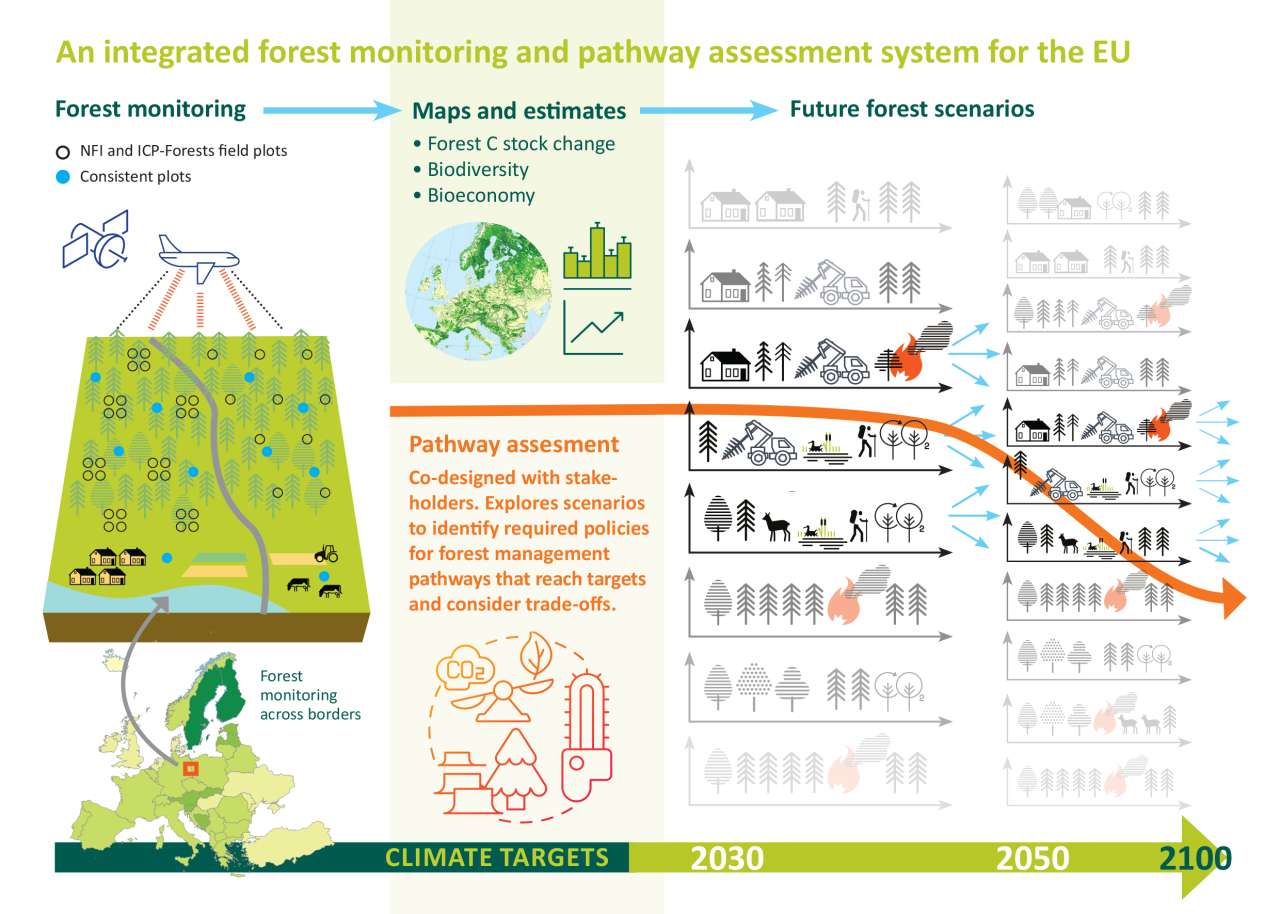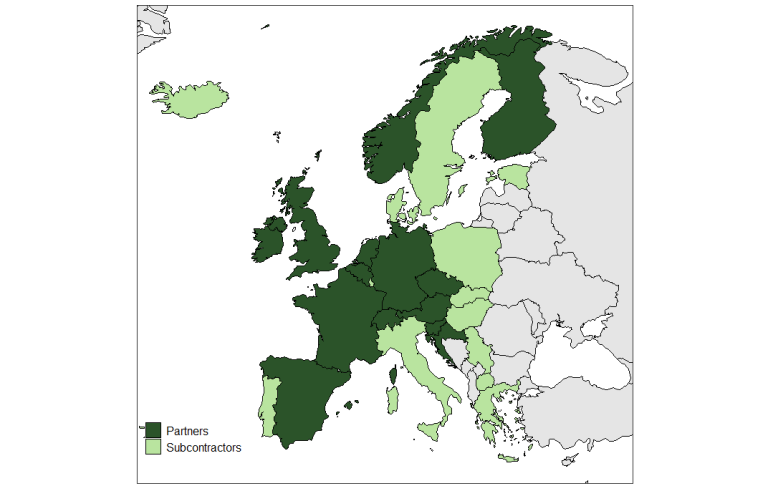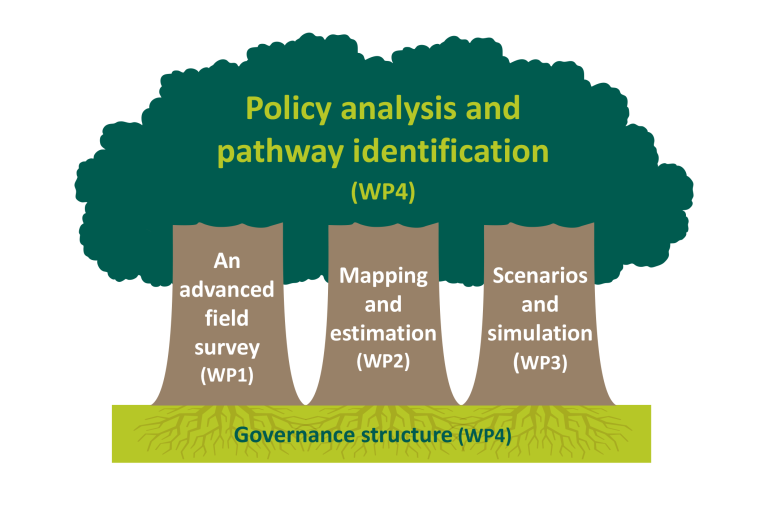Division of Forest and Forest Resources
PathFinder

End: aug 2026
Start: sep 2022
Towards an Integrated Consistent European LULUCF Monitoring and Policy Pathway Assessment Framework
More information
Official project websiteProject participants
Johannes Schumacher Rasmus Astrup Stefano Puliti Clara Antón Fernandéz Ryan Bright Morgane MerlinPartners
Albert-Ludwigs University Freiburg (ALU), Germany
National Institute of Geographic and Forest Information (IGN), France
Vrije Universiteit Amsterdam (VUA), Netherlands
Thünen Institute of Forest Ecosystems (TI), Germany
Croatian Forest Research Institute (CFRI)
Natural Resources Institute Finland (LUKE)
Federal Research and Training Center for Forests, Natural Hazards and Landscape (BFW), Austria
Slovenian Forestry Institute (GIS)
Czech Forest Management Institute (UHUL)
Technical Research Centre of Finland Ltd. (VTT)
Consejo Superior de Investigaciones Científicas (CSIC), Spain
Center for International Climate Research (CICERO), Norway
University of Göttingen (UGOE), Germany
University of Helsinki (UH), Finland
TreeMetrics (TM), Ireland
Eigen Vermogen van het Instituut voor Natuur- en
Bosonderzoek (EVINBO), Belgium
European Landowners Organisation (ELO), Belgium
Institut Européen de la Forêt Cultivée (IEFC), France
Finnish Meteorological Institute (FMI)
Associated partners:
Swiss Federal Research Institute for Forests Snow and Landscape Research (WSL)
University of Bristol (UB), United Kingdom
Joint Research Center (JRC), Belgium
European Environmental Agency (EEA), Denmark

| Status | Active |
| Start - end date | 01.09.2022 - 31.08.2026 |
| Project manager | Johannes Breidenbach |
| Division | Division of Forest and Forest Resources |
| Department | National Forest Inventory |
| Total budget | 57492664 |
The overall aim of Europe is to transition to a climate-neutral and resilient society and economy enabled through advanced climate science, pathways and responses to climate change (mitigation and adaptation) and behavioural transformations. To address this challenge, we need to further our understanding of the changing climate and its implications, close knowledge gaps, and develop tools that support decision makers for mitigation and adaptation actions on various time and spatial scales, and evaluate the societal impact of climate change and the technologies required for the desired climate neutral society.
European forests form a central component in achieving EU and national climate, biodiversity, and economic goals. While there is a lot of scientific information available for decision making on climate change, it is exactly the knowledge on European forests that is falling short:
- The EU needs policies that foster synergies and avoid trade-offs such that the forest-based bioeconomy can help mitigate climate change and promote biodiversity (Grassi et al. 2021). Currently, decision making is hampered because reliable scientific information is missing to device policies that ensure optimal mitigation contributions from forests with acceptable trade-off towards effects on biodiversity and bioeconomy.
- Specifically, there is a lack of a coherent European forest monitoring that ensures updated and consistent information about the state of the forest and ensure consistent and reliable reporting of greenhouse gas emissions from forests. Such a system is required to monitor progress towards targets and continuously adjust and adapt as new information becomes available.
- Further, there are insufficient scientific and reliable models that can predict and project how European forests contribute to climate mitigation and adaptation based upon various scenarios using different natural and socio-economic drivers.
However, it is often not the knowledge that hinders change but the acceptance of the knowledge by stakeholders and uptake in transformative policies. PathFinder aims to demonstrate a mobilization of scientific approaches in co-design of forest management pathways that navigate these trade-offs to identify the decisions and policies that act as steppingstones in achieving these pathways. All stakeholders involved – e.g., scientists, policymakers, landowners, forest managers, nature & biodiversity conservationists, interested public and decision-makers, will thereby mobilize their understanding and evidence in ways that link short-term decisions to long-term outcomes, providing more effective and resilient ways forward.
The PathFinder methods will be applicable in all Member States (MS) and thus also in those with the lowest IPCC monitoring Tiers. Together with JRC, the latter MS will be addressed specifically in our dissemination activities. The methods to be developed will be useful in National Forest Accounting Plans, and we believe that we will reach countries working on NFAPs either directly through the project partners that are involved in these developments or in our dissemination activities.


